Top 10 Free AI Tools for Students to Boost Homework in 2025
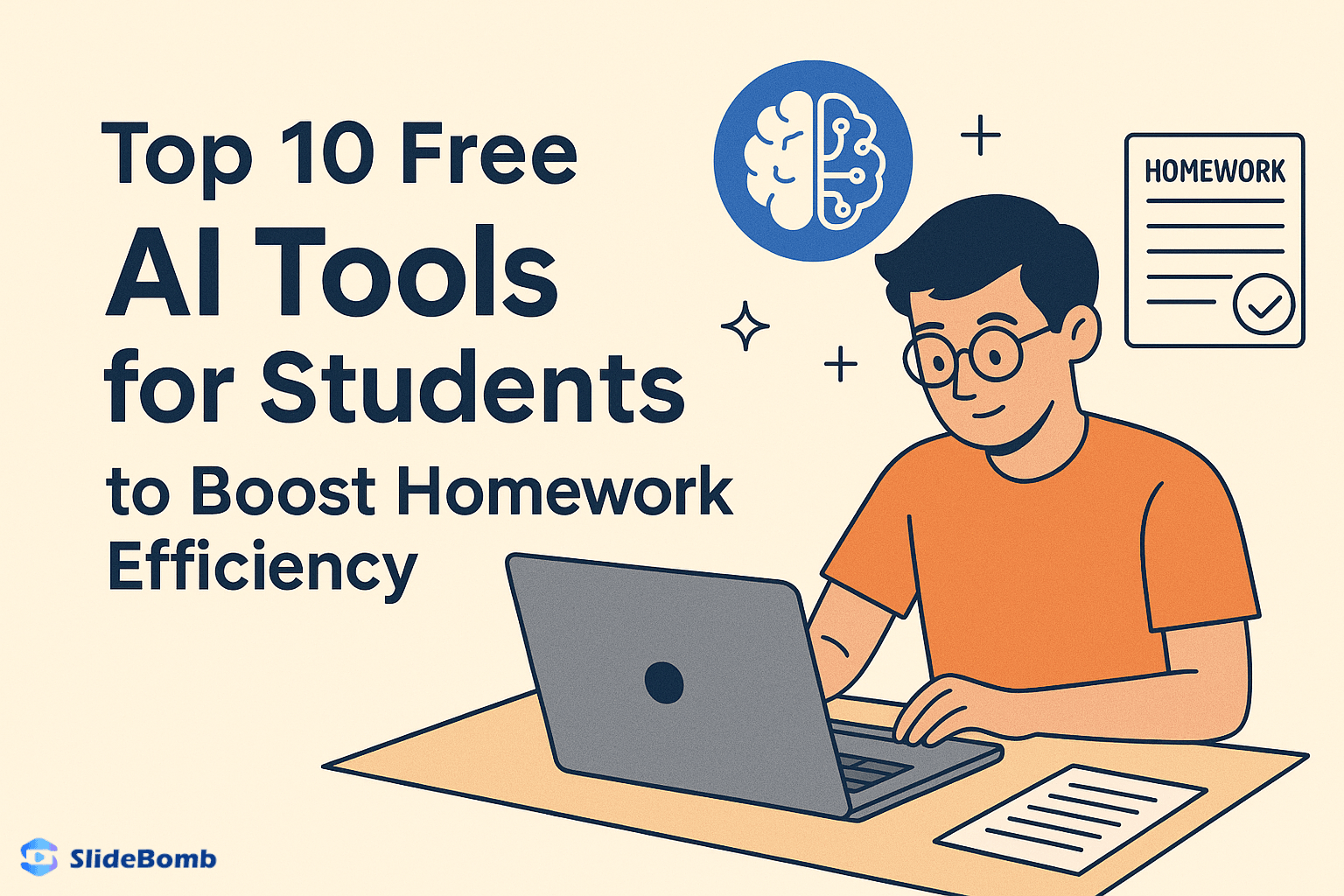
Today's students face overwhelming workloads: long reading lists, endless videos, tough assignments, and limited time. However, with the advent of free AI tools, completing homework has never been more efficient. From summarizing YouTube videos to rewriting confusing text, AI is transforming the way students learn.
In this article, we've compiled top 10 useful free AI tools that can boost your productivity and learning. Whether you're in high school or college, these AI assistants will help you accomplish more in less time, especially the YouTube summarizer tool.
Why Students Are Turning to AI Tools
Students are no longer just looking for shortcuts — they want to learn better. AI tools help:
- Cut down study time
- Understand complex concepts faster
- Improve writing, research, and organization
Take video-based learning, for example. Educational YouTube videos are great, but who has time to watch 45-minute lectures? Tools like Slidebomb make it possible to learn the essentials in just a few minutes.
10 Best Free AI Tools for Student Productivity
1. Slidebomb – AI Summarizer for YouTube Videos
Slidebomb is a free AI video summarizer that lets you paste a YouTube link and instantly get a short, structured video summary. Designed with students in mind, it helps cut learning time in half. Whether it's history, science, or math explainer videos, Slidebomb delivers fast, digestible summaries. It's the go-to AI summarizer for YouTube content and an ideal companion for exam revision or last-minute learning.
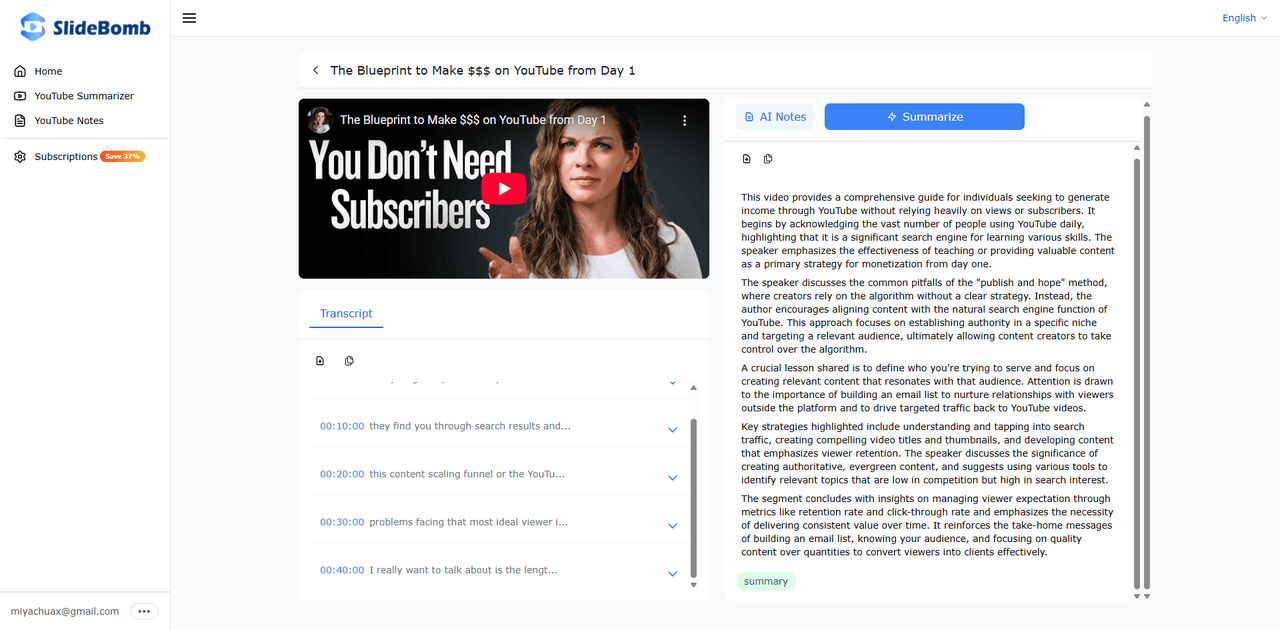
2. ChatGPT – For Instant Help and Idea Generation
ChatGPT acts as your 24/7 AI tutor. Students can use it to explain difficult concepts, draft essays, solve logic problems, or even simulate mock quizzes. It adapts to your tone and knowledge level, which makes it useful across subjects. It's also a great tool for building prompts or writing outlines.
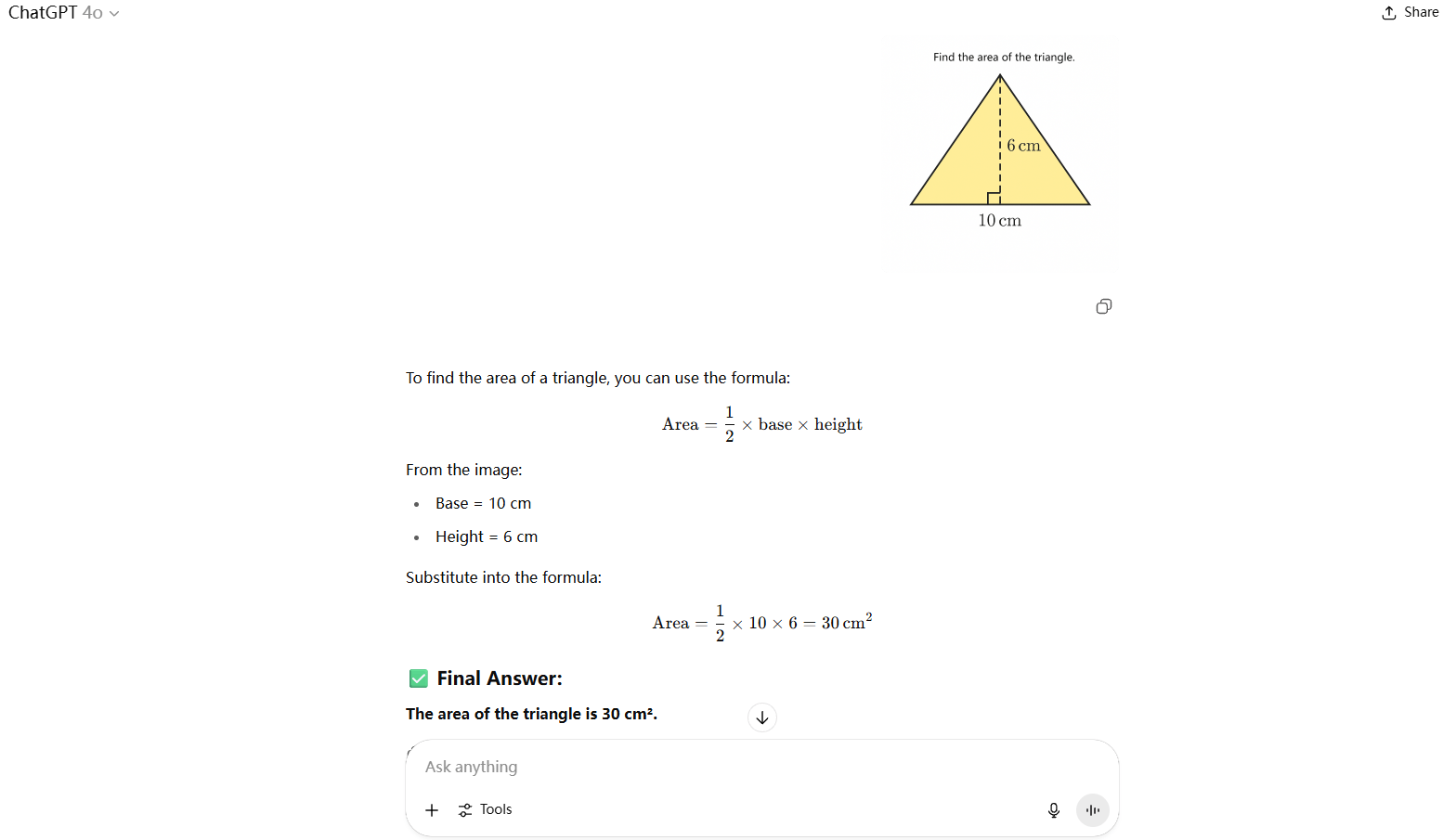
3. Grammarly – For Polishing Grammar and Tone
This AI-powered assistant not only corrects grammar but also improves style, engagement, and clarity. Grammarly's tone detector helps students align their writing with academic expectations. Whether you're writing an argumentative essay or a casual blog, it ensures professionalism and correctness.
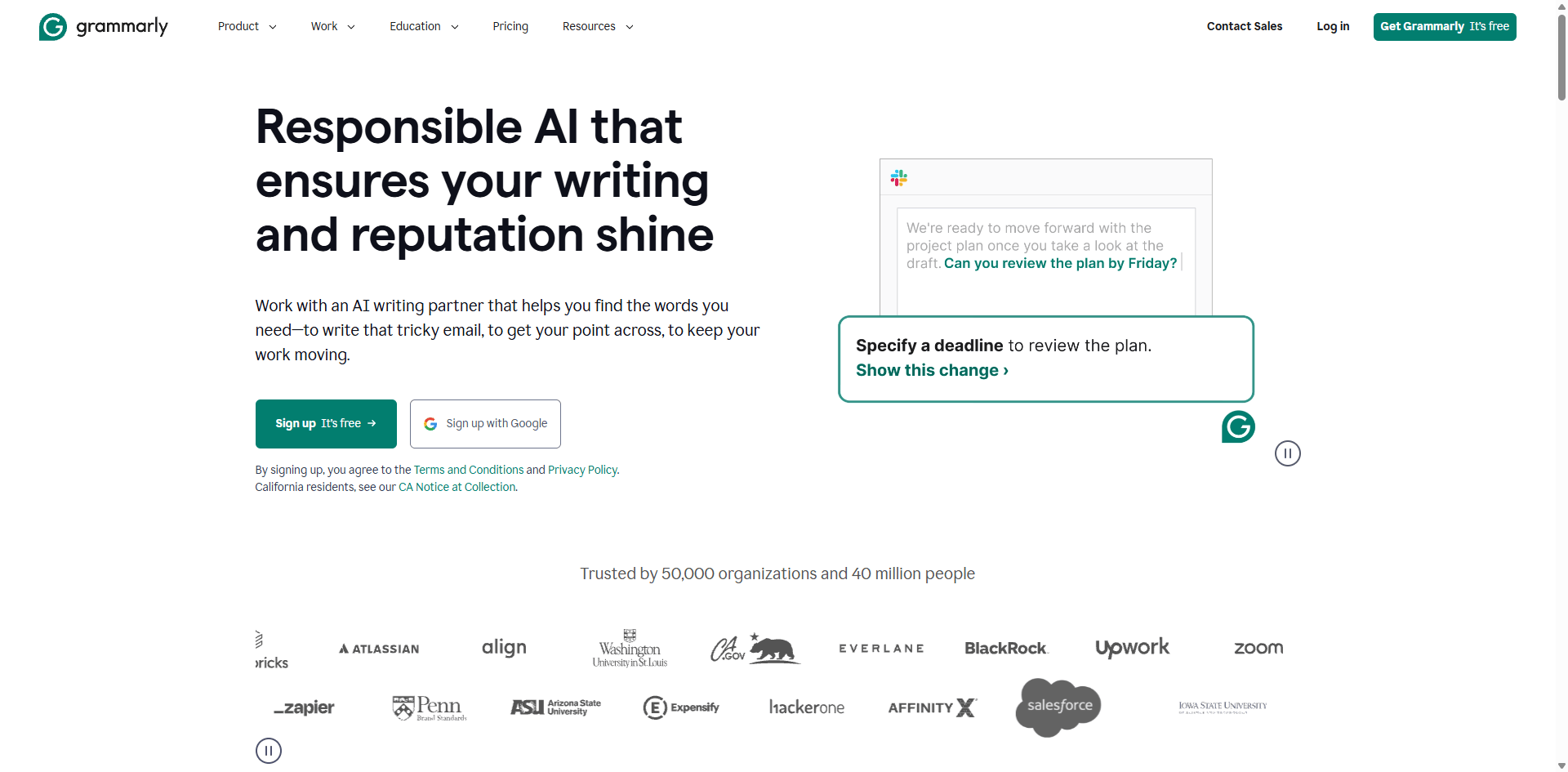
4. Quillbot – Paraphrasing and Rewriting Made Easy
Quillbot rewrites awkward phrasing, simplifies text, and helps you avoid plagiarism when summarizing research. Students use it to clarify their arguments, adjust tone, and ensure originality. It supports multiple writing modes—standard, fluency, academic, and more.
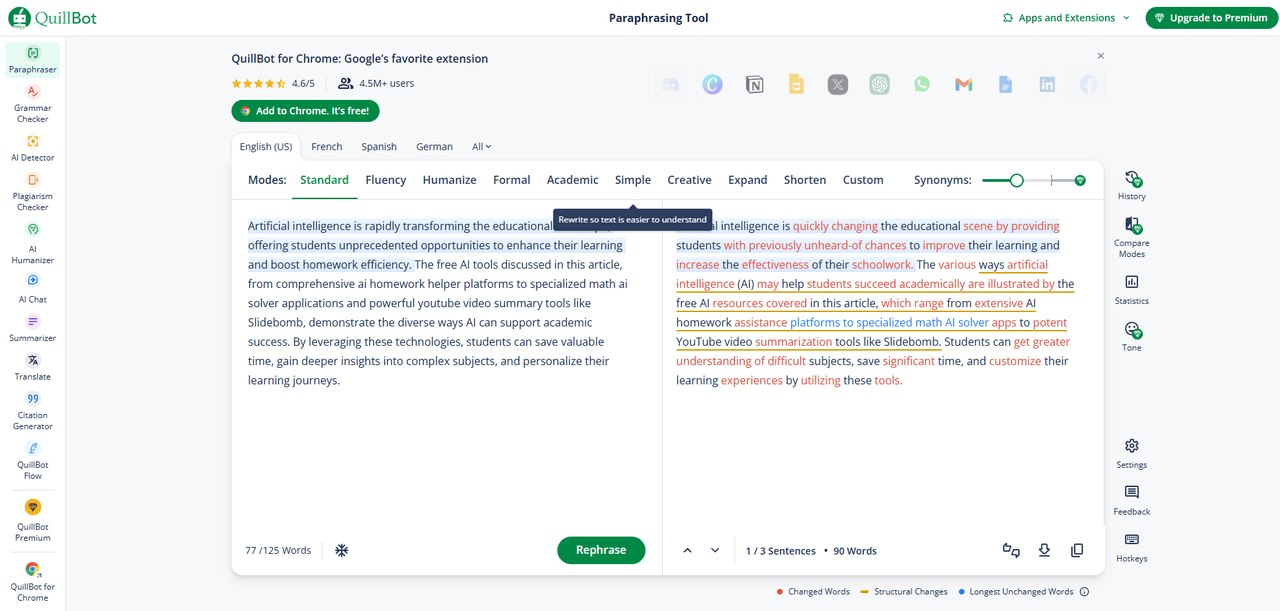
5. Socratic – Solve Homework with Your Phone Camera
Socratic by Google helps students with math, chemistry, biology, and more. Just take a picture of your question, and it gives you step-by-step explanations. It's especially strong as a math AI solver, offering interactive visual aids and learning tips for tough problems.
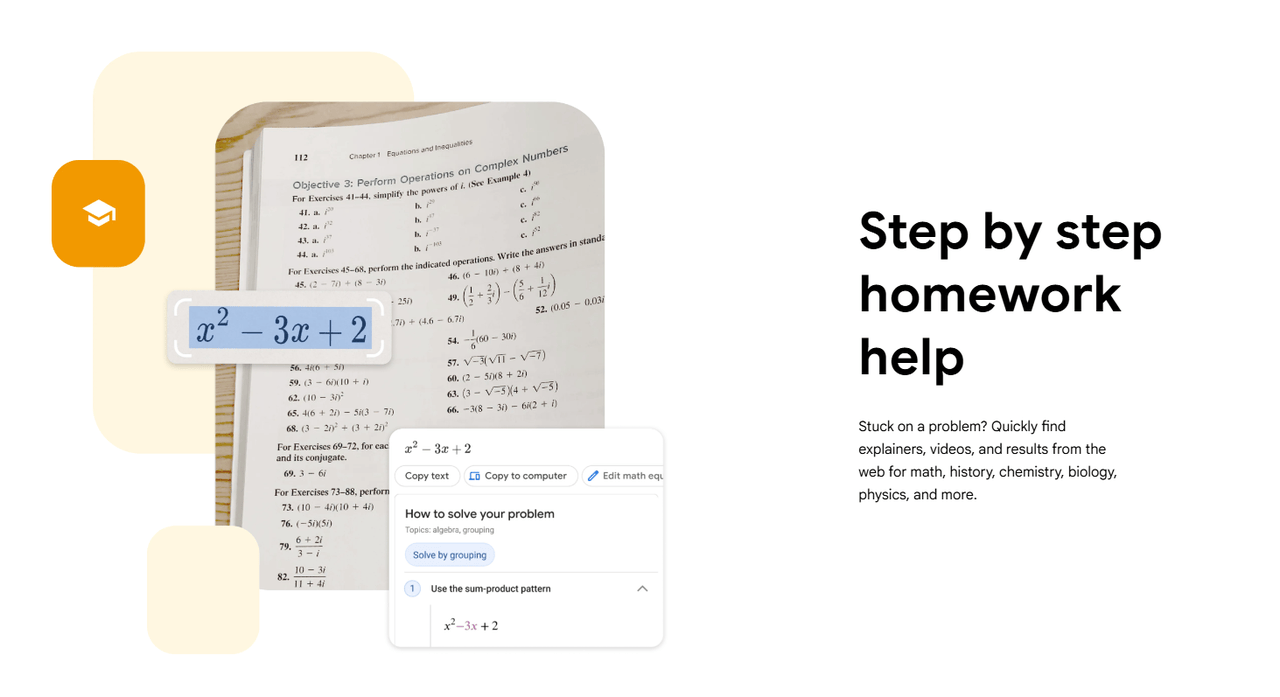
6. Notion AI – Organize Notes and Generate Content
Notion's AI features streamline content creation. Students use it to summarize textbook notes, create to-do lists, and draft essays. Its seamless integration with Notion databases makes it a smart productivity hub for managing assignments.
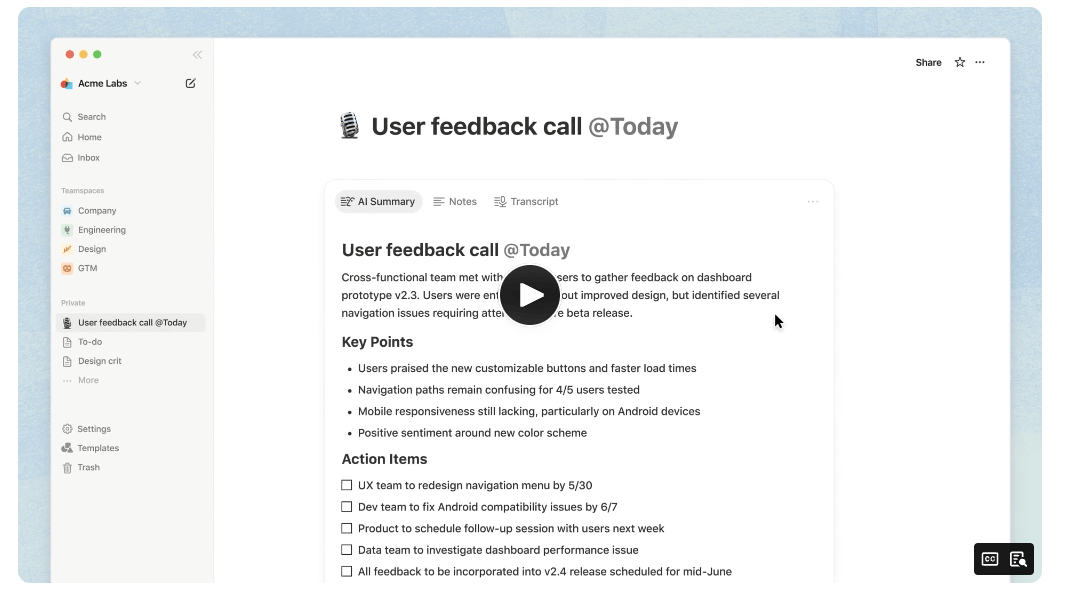
7. Otter.ai – Turn Lectures into Written Notes
Otter transcribes spoken words in real time, making it perfect for students who want to review lectures later. It automatically tags speakers, timestamps, and allows you to search key terms across recordings. Ideal for group projects and lectures.
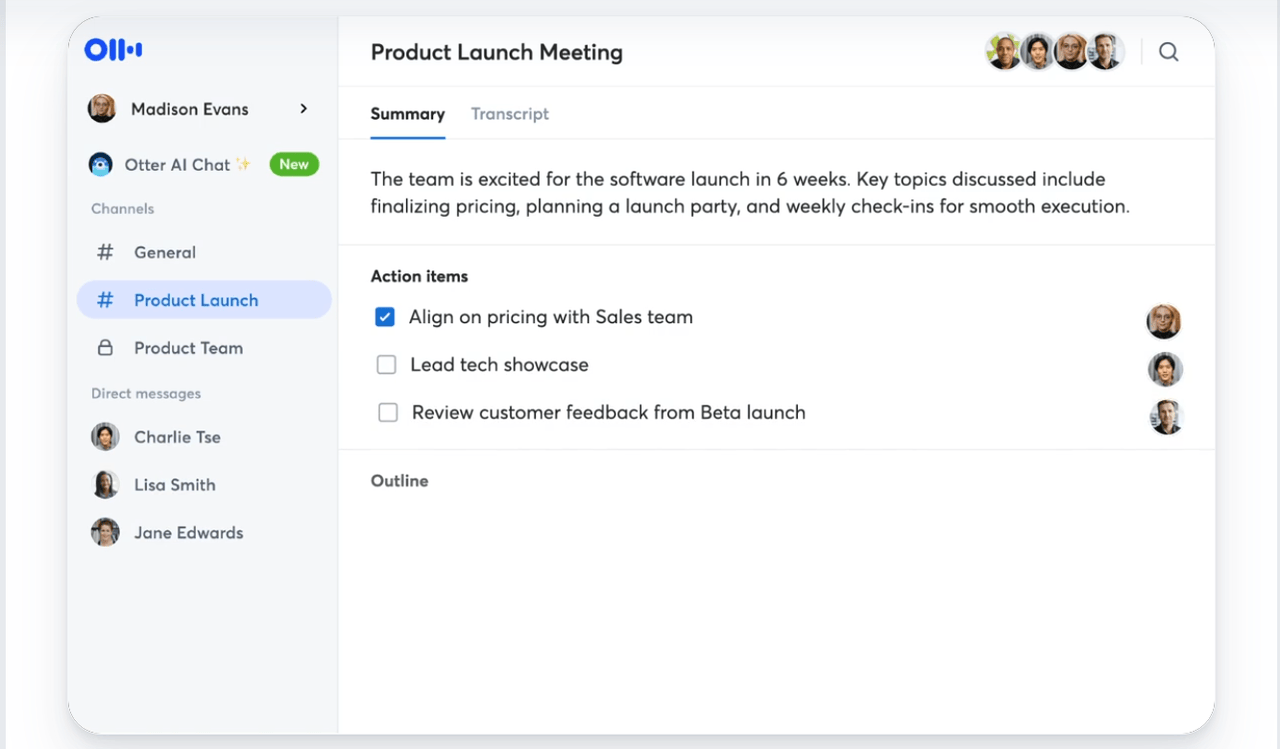
8. Desmos – Free Graphing Calculator with Visuals
Desmos helps students visualize equations and graph algebraic functions. It's interactive and beginner-friendly. For those learning calculus or statistics, it offers sliders, regressions, and digital activities—a solid choice among math AI tools.

9. Knowt – Smart Flashcards and AI-Generated Notes
Knowt uses AI to convert uploaded documents, notes, or videos into flashcards and summaries. It's perfect for students who need help remembering key facts and want to test themselves quickly. Flashcards are generated instantly and can be used for active recall.

10. Monica – AI Copilot for Research and Study Tasks
Monica is a browser-based AI assistant that helps summarize articles, translate languages, generate study outlines, and answer questions directly on any webpage. It's especially handy for research-heavy assignments and offers a helpful AI homework helper for multitasking students.
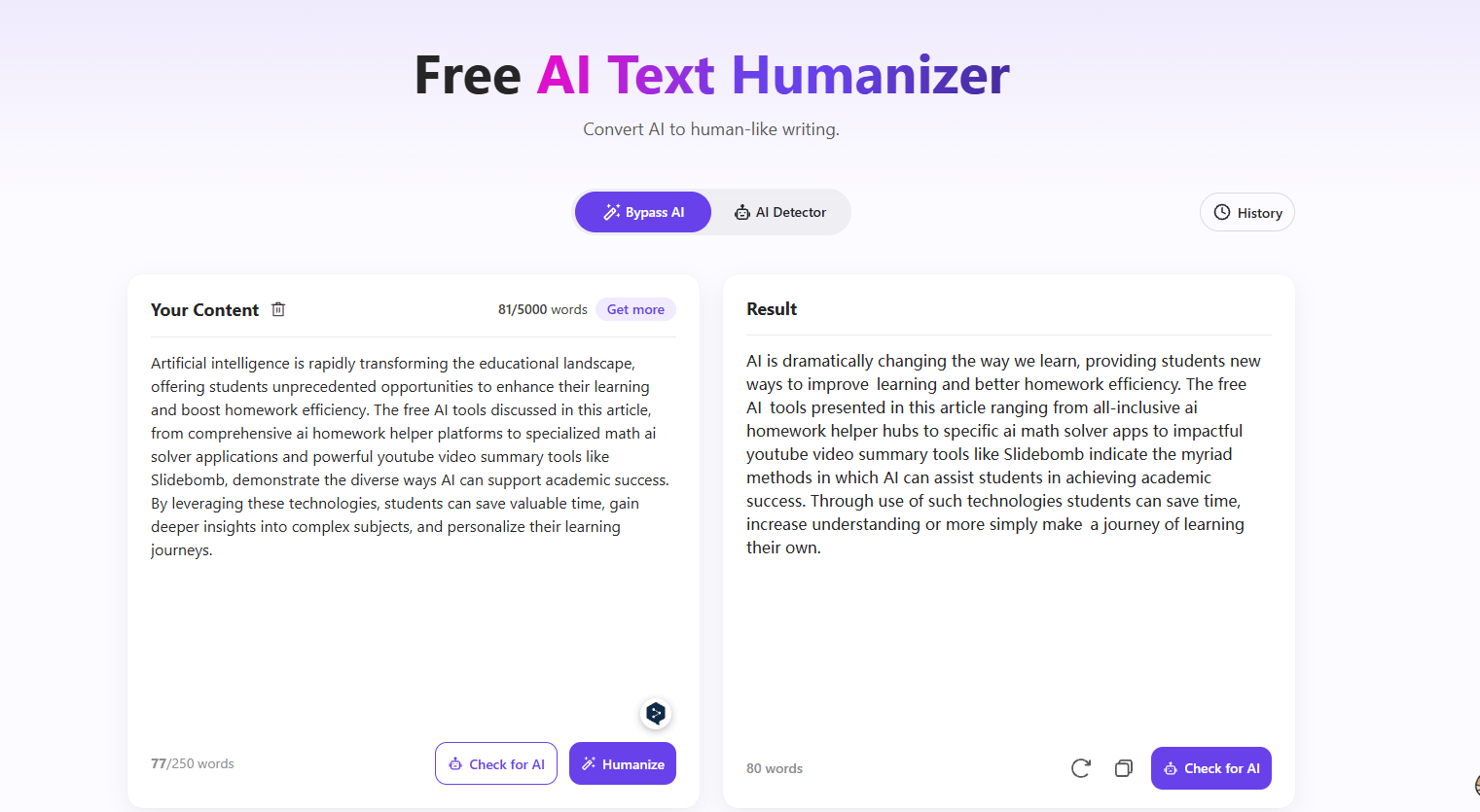
How to Use AI Tools to Build Your Personal Homework Helper
Here's how to create your own AI-powered study system using the tools above:
Step 1: Start with YouTube Video Summaries
Use Slidebomb to summarize lengthy YouTube lectures into short summaries. And make sure you are taught, not only shown.
Step 2: Ask Clarifying Questions
Explain confusing bits, dive deeper into topics, or provide examples with ChatGPT. Think of it as a personal tutor.
Step 3: Take Smarter Notes
Use Notion AI or Otter. ai, which can turn live lectures or study sessions into searchable, condensed notes.
Step 4: Tackle Math and Problem Sets
Snap math questions into Socratic or experiment visually with Desmos. Combine the power of math AI solvers with real-time feedback.
Step 5: Clean Up Your Writing
Refine your assignments and rewrite them with Grammarly and Quillbot. Be meticulous and do not submit sloppy writing.
Step 6: Present with Confidence
Take your insights and present them in a visually-appealing presentation using Knowt.
Put them together, and you have your own AI assistant stack personalized to the way you study, write and solve problems.
Conclusion
In a time when students have several subjects and projects and exams they need to divide attention between, AI tools are like academic companions they can't do without. They are not substitutes for learning — they enhance it. From condensing lengthy YouTube lectures with Slidebomb to math AI tools such as Socratic and Desmos that can solve complicated equations, these tools help students to work smarter, not harder.
Through summarization, transcription, generation and problem solving features that allow students to personalize, students can choose their own workflow to make the most of their time when learning. Whether you're the visual type, a notetaker, or someone who lives off feedback, an AI tool out there that will help guide you through.
Get started building your AI-driven study stack today and see what magic you can work with tools like Slidebomb, ChatGPT, and Quillbot to turn hours of work into minutes of focused, productive learning. It doesn't have to be overwhelming — with the right AI support, homework becomes manageable, even enjoyable.
Note-taking tool for Learning
Slidebomb offers smart tools to cut your learning time in half — improve your learning efficiency for free!
Take Notes on YouTube videos